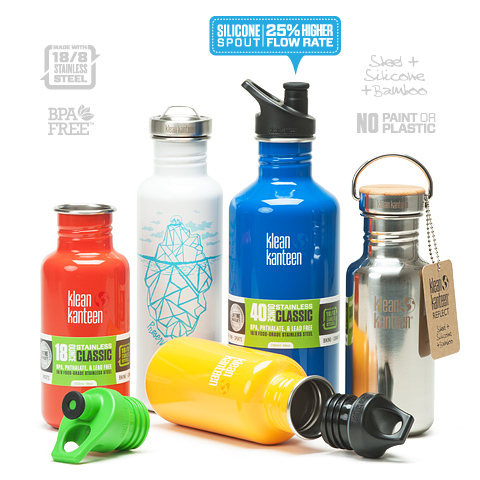Bpa Free Drink Bottles: Go Green and Stay Healthy
Everyone knows that eating fresh produce and regularly exercising is essential in order to stay healthy and in good shape. However, in addition to these, there are other important factors that should also be taken into consideration but are often overlook them. For example, what do you drink your water from while sweating buckets at the gym or while running errands on a hot summer day? Please don’t tell me you use a disposable water bottle!
As a yoga teacher, I have noticed that many of my new students have this bad habit of bringing water to class in a disposable water bottle. If you too do that, then it is time to ask yourself if you’re doing it right. You may be wondering what is the problem of using disposable bottles? Let me explain it to you.
First of all, the word disposable means ‘designed or capable of being thrown away after being used’. In other words, a disposable water bottle isn’t meant to be used more than once. Second, according to experts, everyday wear and tear from repeated washing and reuse can result in physical breakdown of the plastic. Bacteria can harbor in these breakdowns, posing some serious health risks. But that is not all. Experts also explain that plastic bottles can leak chemicals into the water when reused – especially if washed with hot water. Such chemicals have been linked to a number of health problems.
I know all of this because when I was expecting my first son and was shopping for baby essentials, in the bottle island I noticed that all the bottles were marked with the label “Bpa Free”. So I made a little research on the subject. Bpa (Bisphenol-A) is a chemical compound present in disposable water bottles as a result of the manufacturing process. Studies have reported that elevated Bpa consumption can lead to eroded teeth, heart disease, depression, loss of memory, male impotence, type 2 diabetes and slowed learning in children.
One great way to avoid consuming this chemical is by using Bpa free drink bottles instead of regular plastic ones. By drinking your water from Bpa free drink bottles you eliminate the main source that contributes to high Bpa levels in your body. I have to confess that I have never been a fan of plastic water bottles. Contrary to what many think, bottled water is no cleaner or healthier than tap water (although manufacturers may claim it is). Plus, it is much more expensive when compared to drinking filtered water. Not to mention how bad plastic bottles are for the environment. As a person who cares about the environment I live in and likes to save some of her hard-earned money, I always carry with me a bottle of water. And after I’ve learned about the Bpa, I make sure that every bottle I buy for me or my kids is Bpa free.
But Bpa free plastic bottles are not the only material alternative you have to plastic bottles. Stainless steel water bottles are also a great option to consider. Since they are made of stainless steel, there are no worries about Bpa or other toxins finding their way into your water.
Drink bottles are also quite convenient to use, and once my students did the switch they all agreed with me on the matter. They are stylish, safe, and the smartest option available to drink water from in the safest way possible. Although they may be a bit more expensive than the regular bottles, you can not put a price on your health and overall well-being. Take care of yourself!



